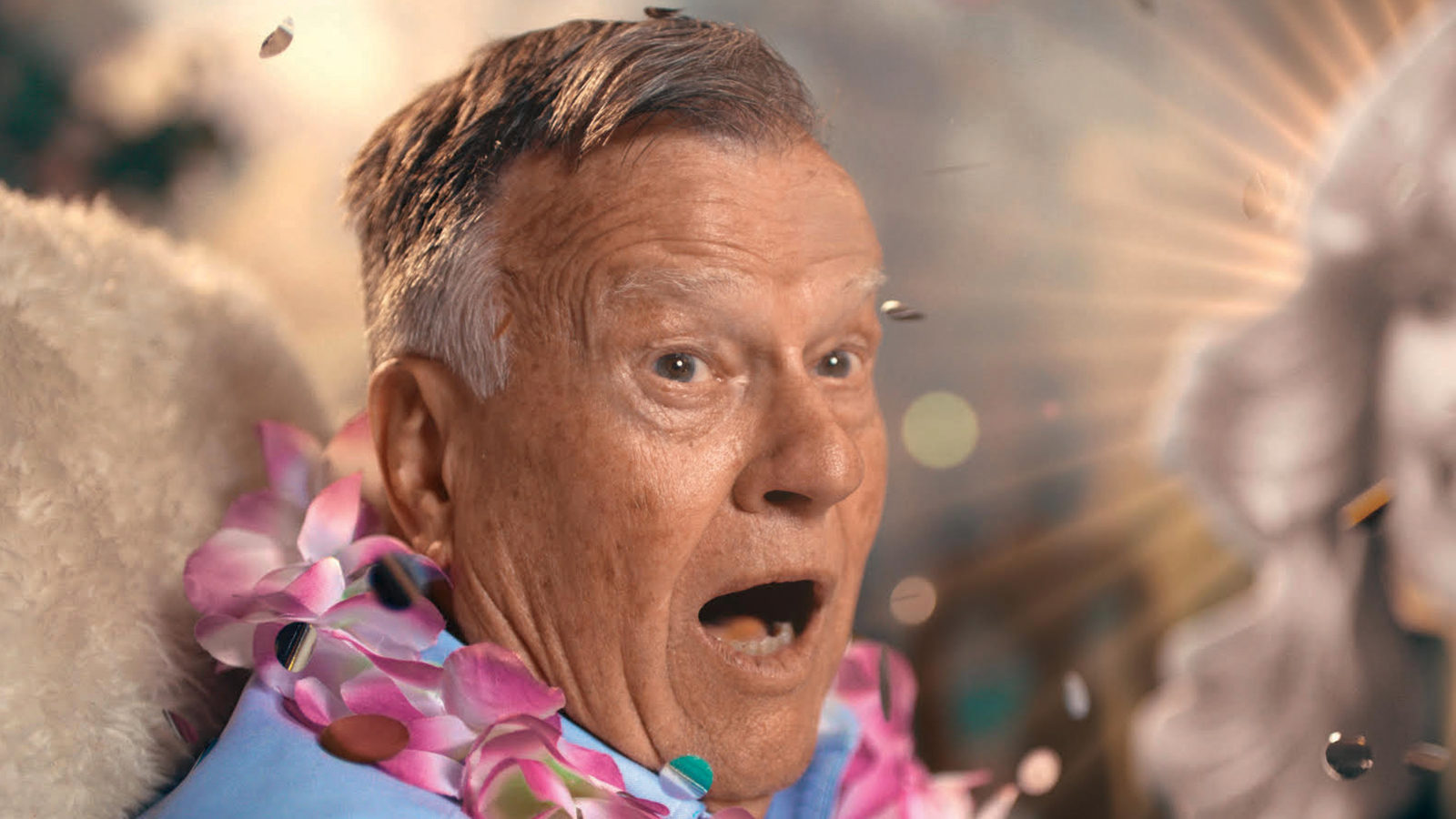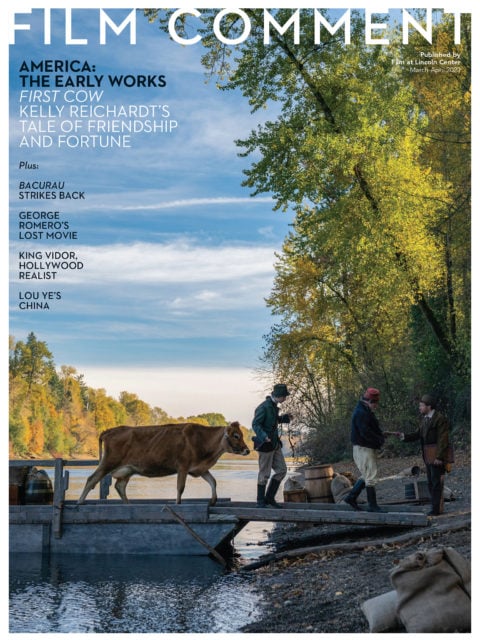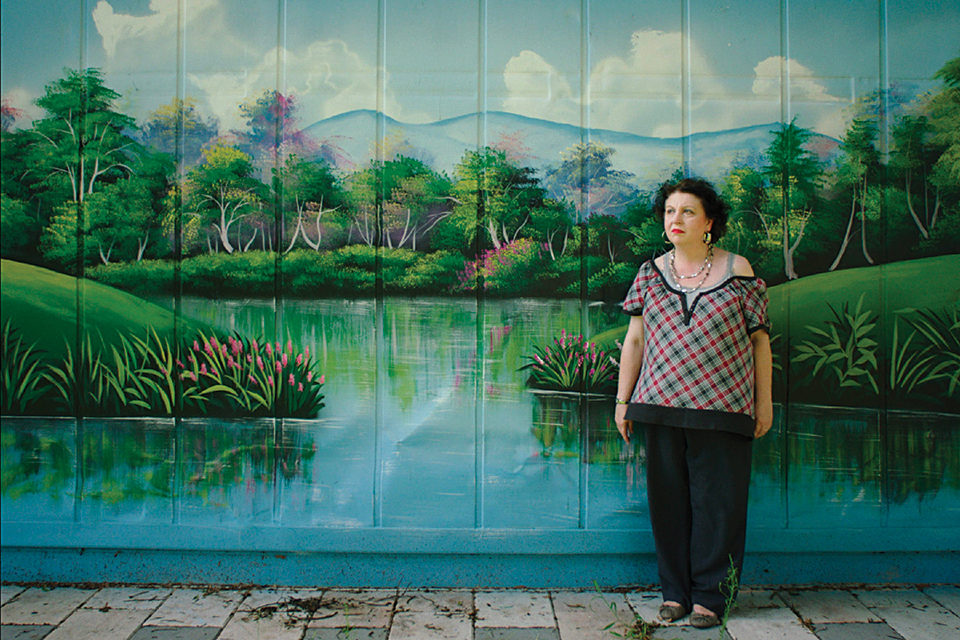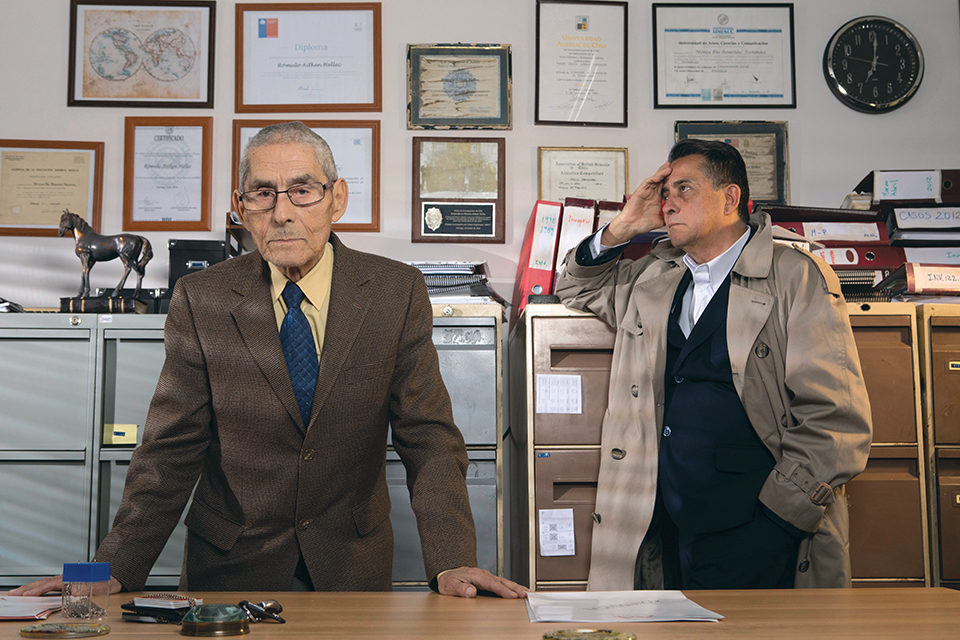
Make It Real: We the Living
There’s a moment early in Dick Johnson Is Dead, the new film by Kirsten Johnson, that flaunts a particularly cinematic power. At its Sundance premiere in January, it jolted some people seated behind me into paroxysms of shock. Johnson has prepared her audience, via voiceover, for what promises to be an exploration of the impending death of her father—even though he’s actually alive and on screen, and complicit in her emotional and creative process(ing). Then we see Dick Johnson walking down the street and an air conditioner falling, swift as a seamless edit, onto his head. Even as the elder Johnson is beatifically splayed on the pavement, clinically shot from above while blood-red spreads on the sidewalk like a Giallo halo, I heard a whisper from the row behind: “Is that real?” The grammar and style of the sequence make such an inquiry something of a stretch—even before Johnson calls “cut” and lifts her father from the frame—but it does establish an uncertainty around veracity that will linger, an uncertainty inseparable from the one separating life and death.

In film, people are always appearing and disappearing, getting killed off and revived. Sometimes the narrative marks a character’s end; other times they just never appear again, ghosts of our unconsciousness. Films also reanimate the actually dead, defying the natural order to ensure that Jimmy Stewart, Toshiro Mifune, and Lillian Gish remain with us indefinitely. All of this also applies to documentaries, albeit with greater consequence, which is always implicit and sometimes directly invoked and exploited. Johnson takes possession of these implications for her film, both as a way of processing her own emotions and as a way of helping us to understand and appreciate our own arsenals of coping.
Johnson dots her film with these florid death scenes—see Dick crash a car, see Dick get whacked by a two-by-four, see Dick fall down the stairs—which serve to cinematically kill her father, but also, of course, to resurrect him in turn. The deaths’ fictionality means that they can be controlled, that they exist within the sphere of life, which is how we encounter and process film narratives in general. As a documentary, Dick Johnson Is Dead allows us to reflect on this, to watch ourselves as we exult in death without consequence, to own these deaths as playthings for the defiantly alive, though all under the specter of eventual actual death—for Dick, and for all of us. It’s in the film’s non-dioramic elements, the observational and candid moments, that life is most urgently asserted. Yes, time is short. Yes, Dick’s Alzheimer’s advances over the course of the film. And also, yes, these images can outlast us all. After the screening, Johnson talked about how Dick loves the film, as it transports him back to people and places he can’t see anymore; and also how with each viewing he has no memory of having seen it before. Present, then gone. Present, then gone again.

Some Kind of Heaven (dir. Lance Oppenheim, 2020).
The vantage of Dick Johnson Is Dead belongs to an adoring adult daughter who’s struggling with the inevitable loss of her sole remaining parent. In Some Kind of Heaven and The Mole Agent, two other documentaries that premiered at Sundance (in the Next and World Cinema Documentary sections, respectively), younger filmmakers offer a more objective view of people living through their twilight years. With Some Kind of Heaven, first-time feature director Lance Oppenheim alights upon The Villages, a massive, self-contained, utopic/dystopic retirement community in South Florida. As documentary film locations go, The Villages is obscenely rich in terms of character and color, which Oppenheim explores from the outset via his locked-down tripod’s deadpan gazes at old folks in vast antiseptic suburban locales, doing everything from tai chi and cheerleading to golf cart synchronization. The line being walked is between ogling and observation, which is softer than but analogous to that separating death and life—it’s the difference between deadening and enlivening what’s being captured.
Relievingly, and somewhat surprisingly, the film does wind up honoring its four main subjects, who are perhaps less representative of the masses from which they emerge than indicative of which people Oppenheim and his crew related and connected to—people they couldn’t treat as Others. For though these are people navigating their seventh or eighth decade on earth, each seems unfinished and frankly unmoored, actively wrestling with the moment and struggling, in their various ways, to connect with others.
One doesn’t need to dwell on or make too much of the age gap between Oppenheim and his subjects (he turned 24 on the day of the film’s premiere), but I’m intrigued by a young filmmaker identifying with persons at the other end of the life cycle, and the older subjects in turn respecting and trusting someone like Oppenheim with the less-than-cute fogey matters of loneliness, financial insecurity, marital discord, and unceasingly disorienting change. I hazard to think that the film’s mutual curiosity gives Some Kind of Heaven its vivifying spirit, that transforms what might have been familiarly charming and smirkily knowing into something more troubling, elusive, and enduring. There are sequences here that seem nearly as constructed as Dick Johnson’s death scenes, but thankfully they don’t serve to simplify or reassure, playing instead as collaborative efforts to dramatize moments we might otherwise avert.

The Mole Agent (dir. Maite Alberdi, 2020). Photo by Alvaro Reyes.
The conceit of The Mole Agent, by Chilean filmmaker Maite Alberdi, presents an 83-year-old man named Sergio who was hired by a private investigator to infiltrate an old-age home in order to check on how a client is being treated by the staff. That the elderly female tenant is being treated just fine is hardly a shocking reveal, and neither is the developing sense that the premise, while at first lightly entertaining, is extraneous to what really matters here. (Sergio is outfitted with spy glasses to record what he sees, even though the film crew is also present throughout, resulting in bafflingly redundant crosscuts between the two sources within the same space.) The deadening/enlivening line that Alberdi walks here is something like that between surface twee and bone-deep pathos, and as with Some Kind of Heaven, it’s elevated through the buy-in of its subjects. A quickly developing friendship with a female suitor who’s looking for sustained partnership culminates in a scene that’s hard to watch but impossible to shake, lingering not because it affirms some truism about the perils of growing old and dying alone, but because it’s irreducible evidence of two people with diverging pasts and motivations converging on this moment together. We don’t know where the next scene will take us; we never know when a cut will signal the end of a relationship, or of the film, or of a life.
Dealing with subjects of an advanced age, some suffering from advanced illness, these are films that are haunted by potential finality. But they’re also inversely oxygenated by a shared sense of appreciation for what’s been recorded and afforded by the camera, by the potential of film to not just attend to matters of life and death but also create from it. There’s really no way to reconcile ourselves to any of this, which means we should never run out of reasons for being mindful of all of it. The lines between young and old, real and imagined, hilarious and tragic, death and life, are ridiculously thin. In cinema we can see them properly, and meaningfully, collapsed.
Eric Hynes is a journalist and critic, and curator of film at Museum of the Moving Image in New York.







